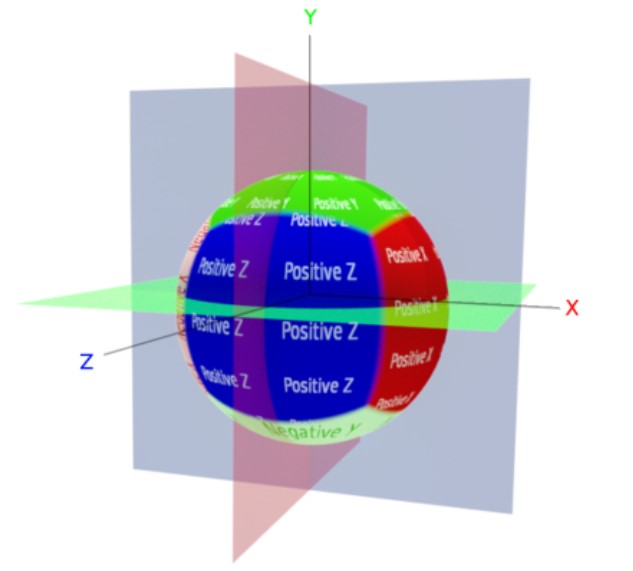
The Triplanar Map texture works in conjunction with a Triplanar projection. The Triplanar projection takes the coordinates in world or object space and it picks the projection axis, depending on the active axis of the Triplanar Map. This gives a quick way to map a texture on any object, and presents the possibility for texture transforms local to each projection axis. The Triplanar Map has six input pins representing the positive and negative x, y, and z planes. The same or different Texture nodes can map to each of these input pins.
In the following illustration (figure 1), the NodeGraph Editor window is used to clearly illustrate the association of the various texture nodes.

Figure 1: The Triplanar Map and the Triplanar projection are mapping a Check texture and a Turbulence texture to different projection planes of an object
This texture maps multiple texture samples along the x, y, and z planes in world space or object space coordinates, and blends them to create one seamless texture (figure 2). In most cases, depending on the complexity of the model, it maps textures without having a UV-mapped mesh.

Figure 2: The Triplanar Map coordinate system.